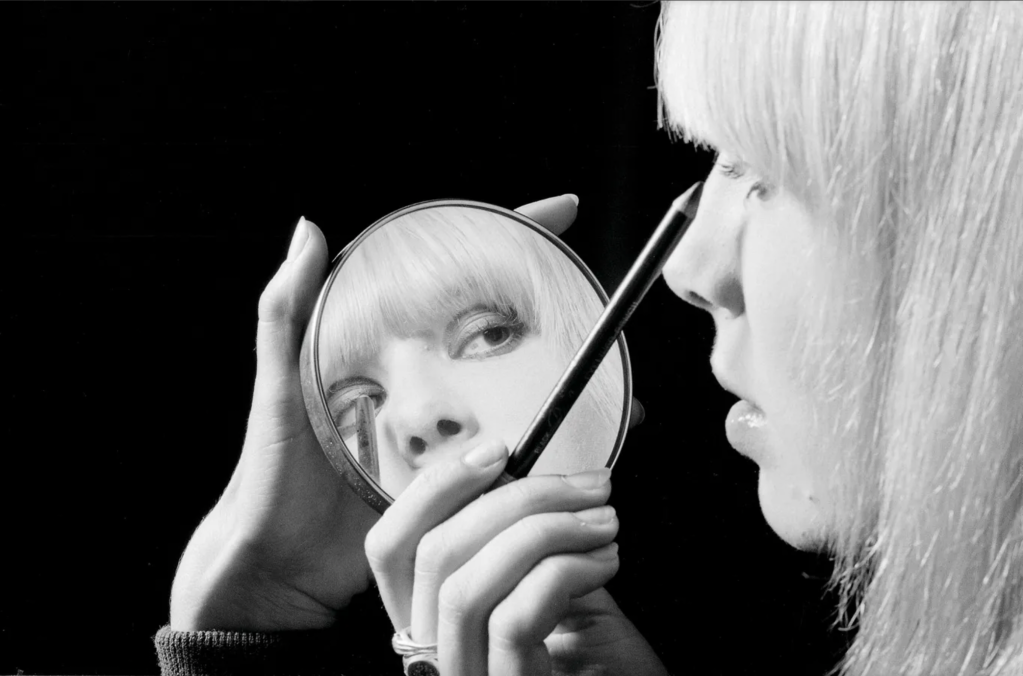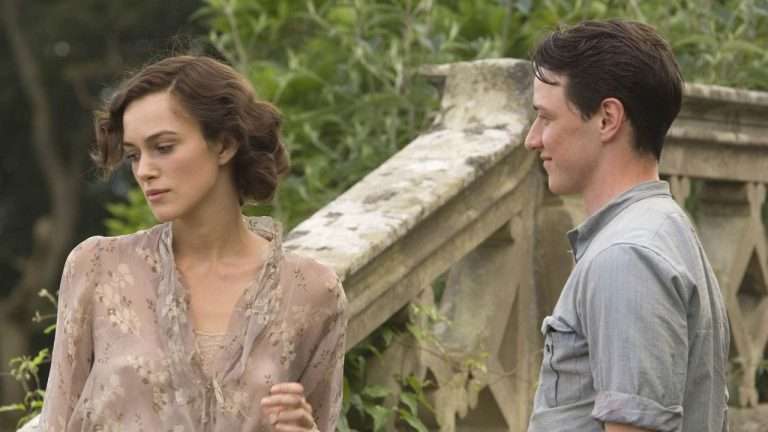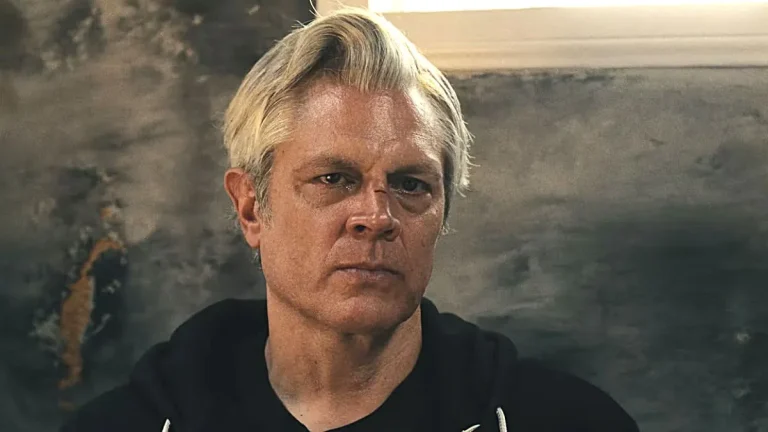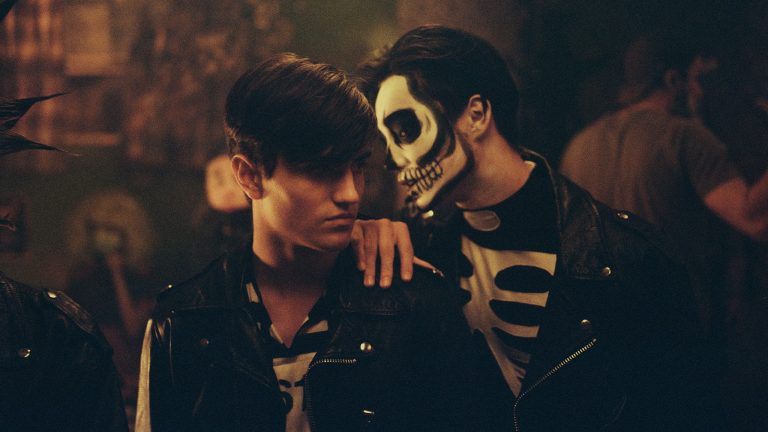Documentary makers love the 60s. It was a truly unique decade in modern history, bursting at the seams with rockers, revolution, art, drugs, fashion, experiments, and liberation. Clubs filled with groundbreaking new sounds, their backstages cramped with VIPs, marijuana smoke, poetry, black magic, and psychedelic mind expansion. Every London haunt was spitting out musical legends like holes in a dam, and it would have been all too easy to get lost inside. Swallowed whole and fizzled into the background.
But not for Anita Pallenberg. On a balcony in South Kensington, she lived there with Brian Jones of The Rolling Stones, hosting month-long parties that people attended to see Anita more than any Stone. This constant buzz of hangers-on, flowing drinks, and messy rooms would determine Anita’s future, where she’d be feeding her own children among drug paraphernalia and the sound of guitars tuning at 5 a.m.
Four years before meeting The Rolling Stones at a 1965 concert in Munich and swiftly entering a relationship with Brian (who she thought the prettiest of the five-person English rock band), Anita had “escaped” her German-Italian roots and fled to America. She took one step in New York and commanded it; she met the members of some prominent rock band and decided to tag along, sometimes even overshadowing them. She was “one of the boys,” but as cool as this lifestyle sounds, it came with a high price tag.
Alexis Bloom and Svetlana Zill’s intimate and devastating documentary takes us through Anita’s life as the unofficial sixth member of The Rolling Stones. Scarlett Johansson voices the narration straight from Anita’s unpublished memoirs, which feels like putting an earpiece to her thoughts or opening a page of her diary. Hers was a life well documented—briefly a model, forever a muse, girlfriend of rock stars, established actress, and fashion trendsetter—so most of Catching Fire: The Story of Anita Pallenberg comprises archive footage and home videos.
Not only does this give it a personal and nostalgic feel, like we’re in the room with her, but it also gives us a refreshing break from the usual documentary talking heads. Anita’s children, friends, and colleagues do feature as interviewees, but they’re mainly used for context and narration—the bulk of the movie stands firmly in the past. Especially the first half, where old footage of Anita’s “square smile” and constant laughter, lolling about cruise decks or dancing with a cigarette during her prime, fall away to haunting black-and-white photographs in the second half, holding still on an aged Anita with empty eyes, clutching at a glass of whiskey from the money she stole to afford.
But back to the beginning: Anita made a name for herself in the mid-sixties, someone outside of just befriending famous people. “We had our own power,” Johansson demands, speaking from Anita’s strong-willed feminism that ensured her own career, style, and independence. Like many war babies, Anita sought to become a free spirit—a wild child with enough charm and magnetism to have the Stones members falling in love with her, one by one, her smile setting them off like dominoes.
Anita’s first lover was the multi-instrumentalist Brian Jones, who eclipsed the early, happy days of the band in London. Alcohol had turned to LSD, and it was here that Anita’s busy living started to go downhill. Bloom and Zill slow down the footage and bring in an eerie, drawn-out melody to depict Brain’s declining mental state, which Anita describes as “spooky,” his acid trips taking a demonic turn and throwing Brian into uncharacteristic fits of rage. “Fear, chaos, violence. I loved every minute of it,” Anita admits, and it’s this love that would foreshadow the violence of her future.
Setting the tone of her life to one of reckless hedonism, Anita fell in love with guitarist Keith Richards, and Jones left the band, his behavior too intolerable to work with, even for hard rockers. She began her film career and found a knack for it, starring alongside Stones singer Mick Jagger in Performance (1970), defining the dawn of a new decade. The bohemian rock chick look was in, and Anita shared a wardrobe with Kieth—as most people did in the day, including Jimi Hendrix—that summarized the era: clashing patterns, flowy fabrics, lots of skin, androgyny.
Everything is a little shabby, unfitted, and over-accessorised. Her influence on the fashion industry was something Anita would return to later in life—a passion she could find grounding and purpose in without the use of drugs.

Celebrating as the documentary is on Anita’s fierce spirit and cultural impact, it holds no qualms with exposing the dark side. Not just to her life but the carefree rock n roll lifestyle in general…one that usually left a trail of destruction behind it. By 1972, Brain had died from drowning in a pool, high on drugs; Anita was pregnant and struggling to quit heroin; and Keith wanted Anita to stop acting (or any career) for good. Her life morphed into a chasm of isolation, loneliness, boredom, and arguments, smashing plates and moving house, dodging the police.
Bloom and Zill do gift us a few moments of joy, though, playing happy families in the Swedish mountains, tobogganing down the snow at Christmas. But the fact remains: Anita and Keith were people with drug addiction and dysfunctional parenting skills, and the “greatest show on Earth” had turned to ashes in their hands. Only Anita was publicly vilified for a history of drug abuse and sleeping around, whereas Kieth got off scot-free as an absent father and toxic, possessive partner. She was the only “one of the boys” expected to be a mother.
Perhaps the most disturbing part of the whole diabolical story is Keith playing a gig moments after finding out his son had died. Anita was in hysterics that her beloved ten-week-old Tara Jo Jo had died of SIDS, and when his bandmates told Kieth to skip it, he put down the phone and sauntered on stage anyway. Keith later claimed to play as a distraction, but it’s hard not to notice how easily the notes drift from his hand and how dry his eyes seem in the documentary’s live footage. The unsettling incidents just kept on coming, and Anita was arrested for the death of her 17-year-old lover (she was 37), who accidentally shot himself while watching Deer Hunter (1978). Her kids were taken away, and everything went black.
Catching Fire: The Story of Anita Pallenberg follows the dark, drug-addled breakdown spiral that most biopics do, but instead of all doom and gloom, Bloom and Zill leave us on an uplifting note. Anita manages to recover from her mental breakdown, sober up, and go to school. Her graduation photo at fifty-two puts us in the shoes of a proud parent after witnessing her tragic decline. Instead of a midlife crisis, Anita undergoes a rebirth—a transformation. Kate Moss notes how she only knew Anita in her older, cleaner years and was mesmerized by her passion, humor, and runway walks. We see her at sixty years old, smoking cigarettes in leather outfits, making movies like she always dreamt, showing us that age really is just a number.
Catching Fire: The Story of Anita Pallenberg is a story about the original “rock n roll goddess,” but it’s also a lesson on the damaging glamorization of rock culture. Sex, drugs, and rock n roll isn’t just a throwaway catchphrase to print on t-shirts but a motto that leaves corpses floating in swimming pools and teenagers failing Russian roulette. That said, Bloom and Zill honor Anita by ending on her 65-year-old square smile, the same one her daughter shares.
“I don’t need to settle scores. I’m reclaiming my soul.”








